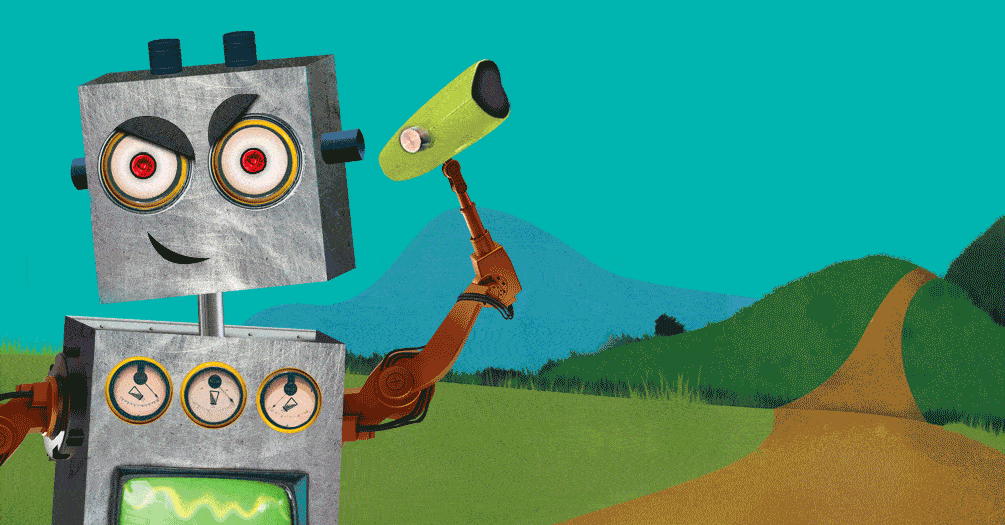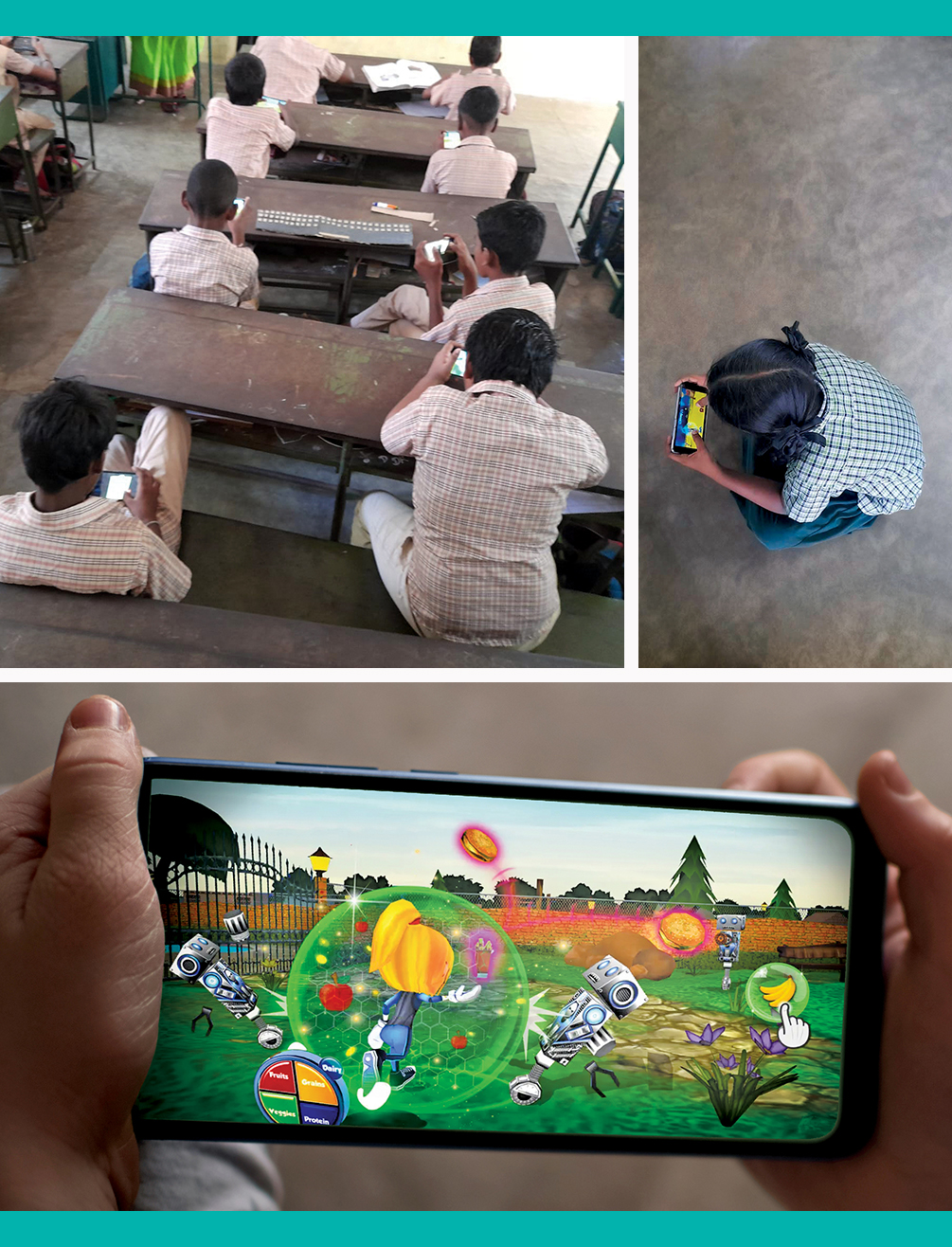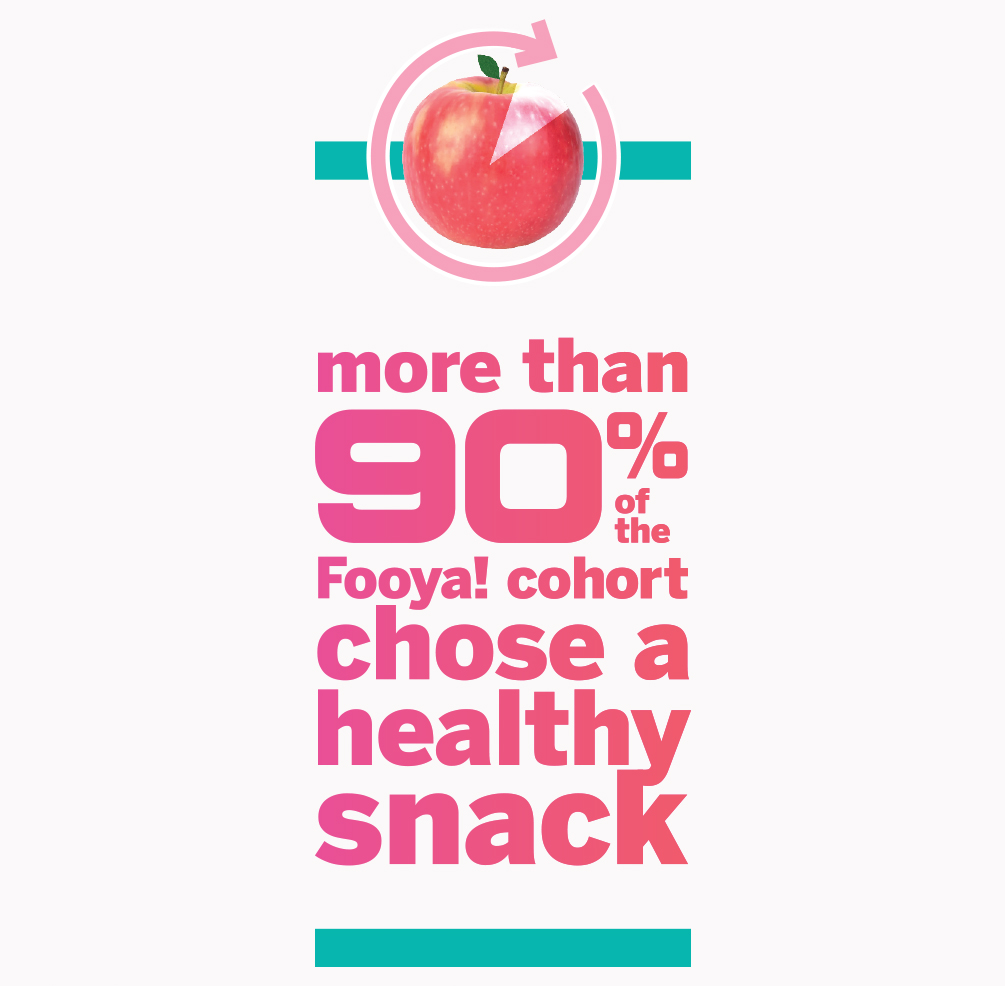Game on

Transforming smartphones into health-boosting tools
By Jenni Laidman
Illustration by Julia Lubas
Social media. Shopping. Gaming. Texting. Doomscrolling. Scores of smartphone programs keep us in their thrall with their clever algorithms, waste our time with dopamine-inducing cat videos, seduce us into spending when we don’t need to, and bombard us with persistent distraction.
What if the power behind the programs that keep us leashed to our devices actually delivered good health, disease prevention—even digital vaccinations?
What if evil doughnut-throwing robots could help?
Rahul Ladhania is an assistant professor of Health Informatics, Biostatistics and Health Management & Policy at the University of Michigan School of Public Health. He is part of a team of global researchers doing the painstaking work of subverting the formidable powers of computer algorithms into a force for good.
“You are seeing on Instagram or Facebook, or even when you go to search, that you’re being targeted,” Ladhania said.
Online algorithms learn your preferences and play to them. “Kids are already being manipulated—and adults too—by their devices,” he said. “And now we’re saying, ‘What can we do for good?’”
INTERESTED IN A DEGREE from Michigan Public Health? Learn more about our programs.

It’s not an impossible proposition. So far, experimental interventions have pushed people to go to the gym more often and to get an annual flu shot in the fall. They’ve even subtly convinced children to eat healthier.
Behind these interventions aimed at fostering healthier habits are extensive studies that are larger than ever before and utilize a branch of artificial intelligence known as machine learning.
These are referred to as megastudies, which can involve hundreds of thousands of participants. They are essentially large-scale field interventions that compare dozens of strategies—anywhere from 20 to 50—rather than just one or two against a control group, as is typical in social science research.
This innovative approach allows researchers to collect comprehensive data and apply machine learning techniques to pinpoint which strategy is most effective for specific population subgroups, representing a significant advancement over traditional two-intervention comparisons.
Ladhania’s research tackles a trickier problem than drug efficacy: He is looking at how to change a person’s behavior for the better. The fact is, we stink at self-improvement. We don’t get our flu shots even when we intend to.
Ladhania, with his partners in the Behavioral Change for Good Initiative, are working to change that. The initiative is an international collaboration among “casual machine learning researchers” such as Ladhania and economists, behavioral scientists, and business and marketing experts, sponsored by the Wharton School of the University of Pennsylvania. As a visiting scholar with the initiative, Ladhania co-led its machine learning team, leveraging the power of gigantic datasets and machine learning against our daunting reluctance to change.
READ MORE about faculty, students, alumni and staff.
You are seeing on Instagram or Facebook, or even when you go to search, that you’re being targeted. ... Kids are already being manipulated—and adults too—by their devices. And now we’re saying, ‘What can we do for good?’”
— Rahul Ladhania
In one investigation, Ladhania and colleagues partnered with Walmart pharmacies to see how to best boost flu vaccination rates in a study involving nearly 700,000 people.
Instead of a head-to-head battle between two interventions based on researchers’ educated guesses, the Walmart study tried 22 different text message formats to nudge vaccination rates.
Each text was based on some favorite hypothesis about what sparks behavioral change.
The messages differed in wording, timing, interactivity and tone. Some interventions included two texts, some three, some one. While some reminded recipients about their last bout with the flu, others linked vaccinations and social responsibility. Some asked recipients to respond to a flu vaccine message. And one group received no message—the control group. Each of those 22 text ideas went to a group of at least 27,000.
The winning message consisted of two texts, the second text saying that the patient had a vaccine reserved just for them. “Remember a flu shot is waiting for you at Walmart,” it read.
That message increased vaccination rates by about 10% compared to the rate in a placebo group that received no message. While that message worked the best on average, is it the best message for, say, teenage boys or working mothers or new college graduates, or other population subgroups of interest? Ladhania hopes to find out.
SUPPORT research and engaged learning at Michigan Public Health.

“In healthcare, you have so many variables,” Ladhania said. “You have gender, race, education, sociodemographic variables and a gazillion comorbidity data points. It’s hard for even an expert to try to understand which intervention is most effective for whom.”
With machine learning, he hopes to pinpoint not only which interventions make us exercise or tackle procrastination or eat healthier, but which interventions work best for which people. Using data from a vaccination study similar to the Walmart research, Ladhania is taking the next steps with a follow-up experiment to validate if machine learning-driven tailored messages are really effective: “Could that be more effective than giving everybody a random message, or giving everybody the message that was the best performing on average?” He intends to find out.
For many of us, our normal resistance to take on good habits is further compromised by technology luring us to even worse habits. In children, the impact can be powerful and lifelong.
Ladhania is helping to turn the tables on technology, investigating how a game could improve health behaviors in children.
Because we know mobile devices are here to stay, why not leverage them and make them a force for good? We know in the classroom, there is a pronounced focus on digital technologies and digital tools for education. So here’s an example where using gamification principles embedded in a digital platform is making kids follow healthy behaviors.”
— Rahul Ladhania
Remember those doughnut-pitching robots? Here’s where they come in.
Bhargav Sri Prakash is a University of Michigan alumnus and tech entrepreneur who in 2011 founded FriendsLearn, which developed a smart-device game called Fooya! In the game, created with the help of neurological research, avatars fight off an invasion of evil robots destroying the planet Nutrino with processed food. In theory, the game provides children with a digital vaccination against poor food choices.
This is no “educational” game earnestly providing food facts as multiple choice “play.” Instead, a character hit with a hamburger or other junk food grows fatter and slower, less able to fight the enemy. If it grabs a drink of water, an apple or broccoli, it gains power—and magically loses weight. Players compete against each other, gaining coins for success and following one another’s success on a leaderboard, creating a bit of peer pressure as they work their way through countless levels of play complexity. This approach to education is called gamification, converting the things that hook us to competitive activities into incentives for learning.
Ladhania, along with his collaborator, Dr. Rema Padman at Carnegie Mellon University, wanted to test whether playing this game changed behavior in the real world. Elementary school children in Chennai, India, were assigned to play Fooya! or to be in a control group that played a traditional educational game unrelated to health. Both played for 30 minutes weekly. Then once a month, individual children would be given a choice between a healthy snack and an unhealthy one.
The results were impressive. Before the game-playing began, only about 25% of the children in both the Fooya! group and the control group chose a healthy snack. But each month, Fooya! players increased their healthy choices, until by the third month, more than 90% of the Fooya! cohort chose a healthy snack, compared to less than 25% of the control group.
“Because we know mobile devices are here to stay, why not leverage them and make them a force for good?” Ladhania said. “We know in the classroom, there is a pronounced focus on digital technologies and digital tools for education. So here’s an example where using gamification principles embedded in a digital platform is making kids follow healthy behaviors.”
Ladhania said a West Virginia school district is interested in adopting the program, and there are plans to present it to school districts across the nation. The same platform is being used for young people with diabetes, and there are plans to modify it to teach mindfulness.
“I see all the targeting that happens in the real world—targeting in Facebook, Instagram and other social media. They use AI extensively to target you and target me to make us do behaviors which are, arguably, not healthy,” he said. “I think that’s part of what motivates me. Can we borrow the tools from these guys, turn them around and make them a force for good?
“I feel that’s where a lot of this digital health motivation and AI-informed personalization is heading, and it excites me.”

Read More in This Issue of Findings
